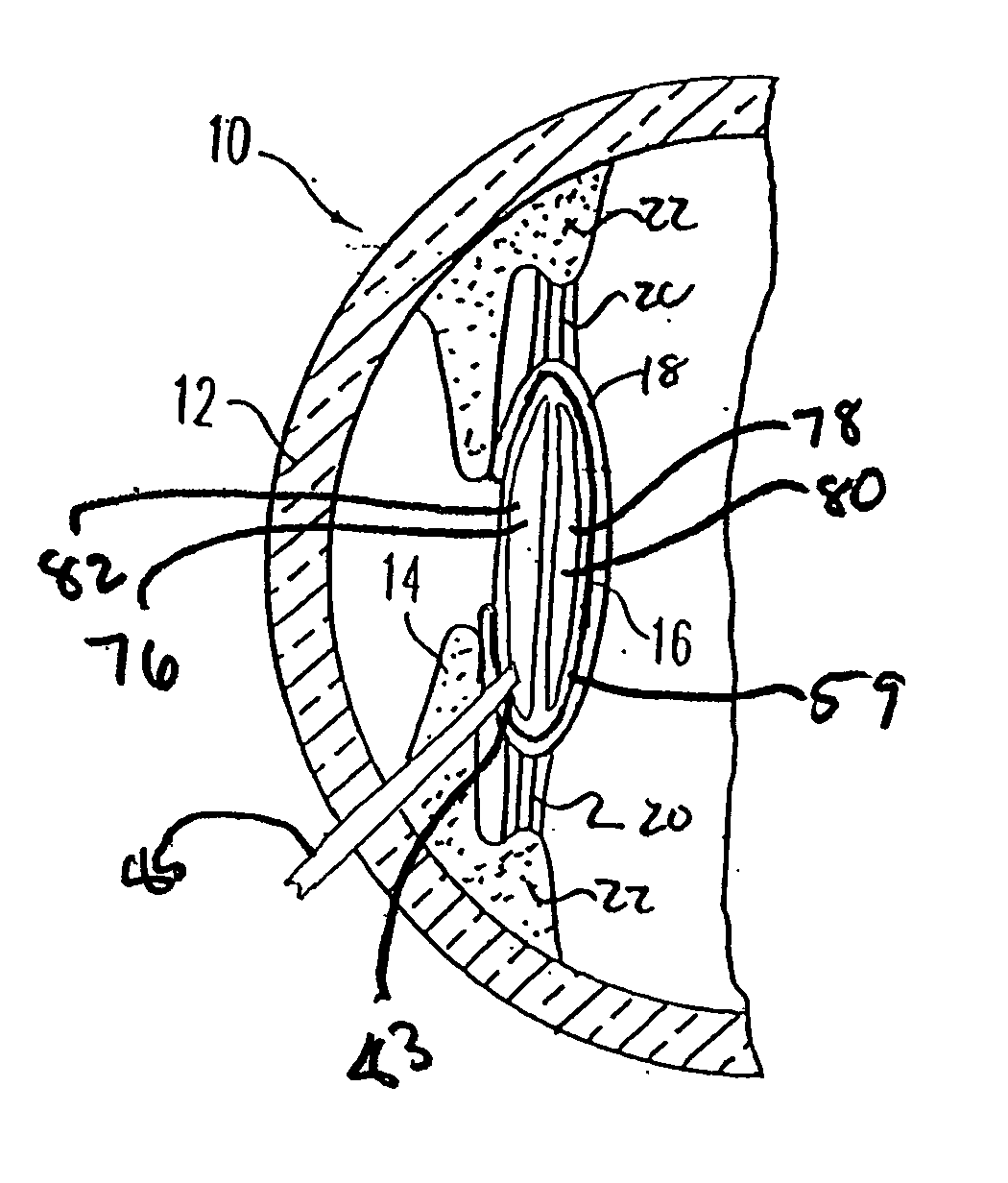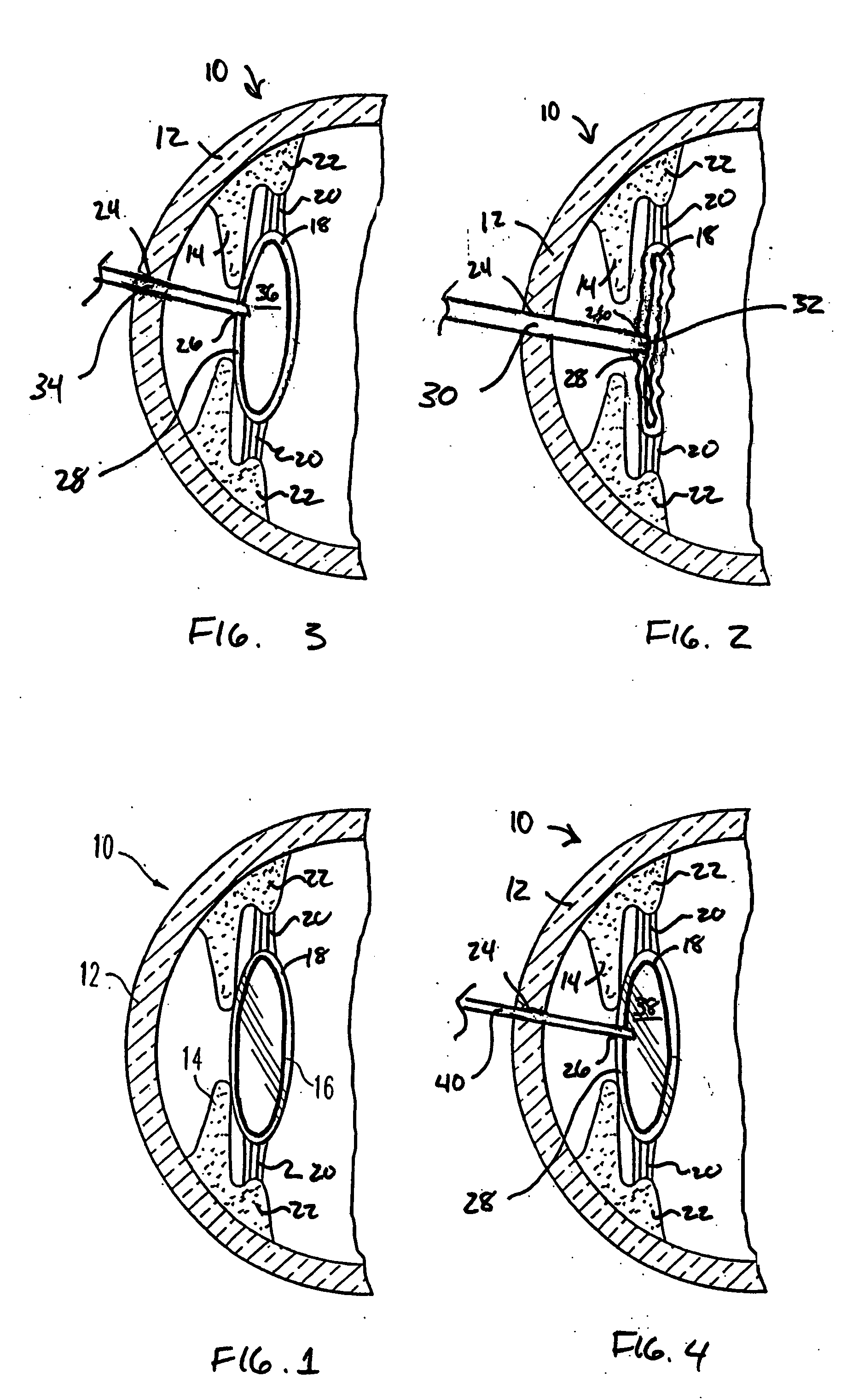Adjustable intraocular lens for insertion into the capsular bag
- Summary
- Abstract
- Description
- Claims
- Application Information
AI Technical Summary
Benefits of technology
Problems solved by technology
Method used
Image
Examples
Embodiment Construction
[0033] Referring initially to FIG. 1, a normal eye 10 has a cornea 12, an iris 14, and a crystalline lens 16. The crystalline lens 16 is contained within a capsular bag 18 that is supported by zonules 20. The zonules 20, in turn, are connected to the ciliary muscle 22. According to Helmholz's theory of accommodation, upon contraction of the ciliary muscle 22, the tension on the zonules 20 is released. The elasticity of the lens causes the curvature of the lens 16 to increase, thereby providing increased refractive power for near vision. Conversely, during dis-accommodation, the ciliary muscle 22 is relaxed, increasing the tension on the zonules 20 and flattening the lens 16 to provide the proper refractive power for far vision.
[0034] To replace the crystalline lens in accordance with the method of the present invention, the first step is to remove the existing lens. As illustrated in FIG. 2, the lens is removed using any technique which allows removal of the lens through a relative...
PUM
 Login to View More
Login to View More Abstract
Description
Claims
Application Information
 Login to View More
Login to View More - R&D
- Intellectual Property
- Life Sciences
- Materials
- Tech Scout
- Unparalleled Data Quality
- Higher Quality Content
- 60% Fewer Hallucinations
Browse by: Latest US Patents, China's latest patents, Technical Efficacy Thesaurus, Application Domain, Technology Topic, Popular Technical Reports.
© 2025 PatSnap. All rights reserved.Legal|Privacy policy|Modern Slavery Act Transparency Statement|Sitemap|About US| Contact US: help@patsnap.com



